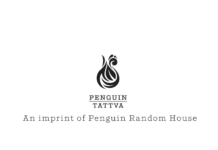
“Having a book adapted to a film is like being in a dentist’s chair, because you don’t know how much pain you have to endure as there are many things that you love in what you have written that get pulled out in celluloid,” says Ashwin Sanghi celebrated author of the political pot boiler Chanakya’s Chant. Three renowned authors and screenplay writers, Advaita Kala, Christopher Kloeble and Ashwin Sanghi were drawn into a lively discussion by German Book Office director Prashasti Rastogi on the evening of Friday 11 December 2013 in the ambience of the Oxford Bookstore New Delhi. This is the first in the series of discussions planned by the GBO in a buildup to the Global Local 2014 in February with more learning to look forward to — such as discussion on the digitization of content by Norwegian libraries.
Understanding contracts is vital
A book unfortunately is often assessed not by its quality but by the number of copies sold, the only measurable metric that many in the trade use to gauge its popularity. Increasingly there is a trend to write books for their combined salability in print and celluloid that gives rise to a method or formula for writing, observed Rastogi. Sanghi agreed that some method writing is needed to make screen worthy books but since the canvas is much wider today, mainstream literary writing is also being converted into screen plays today
Multiple re-writes and story changes are needed, but writers must understand that they must read and understand their contractsin detail. Other wise,they can lose not only the full control of the script but also the money, especially if the script undergoes wholesale change.Content rights should not be signed away lock stock and barrel either to the publisher or to the film maker because there are multiple sale avenues which only the original content producer can pursue. A publisher is usually good for one language, one nation and one medium. It may not have the skill, know howor resources to pursue book sales in other territories, translationsin other languages, digital content sale and television or film rights.Thus authors must learn what to give away and what to hold back during rights negotiations
Publishers in Europe have been more patient with authors, says Kloeble. Authors are not only published due to their immediate salable value but also for their long term potential. Nine out of ten authors produce books that lose money initially, but as they mature into professionals over the next 10 to 20 years, they produce books that have immense value. “The film industry also is more ready to accept a wider variety though there is a trend of murder thrillers dominating the German TV shows,” he quipped. When Advaita Kala said that initially she had doubts about the script of the superhit movie Kahani with Vidya Balan at its epicenter because it was women centric, while films in India were usually revolved around the male lead, Kloeble commented that in Germany the scene was radically different since nearly three fourths of the book readers and TV viewers were women.

















